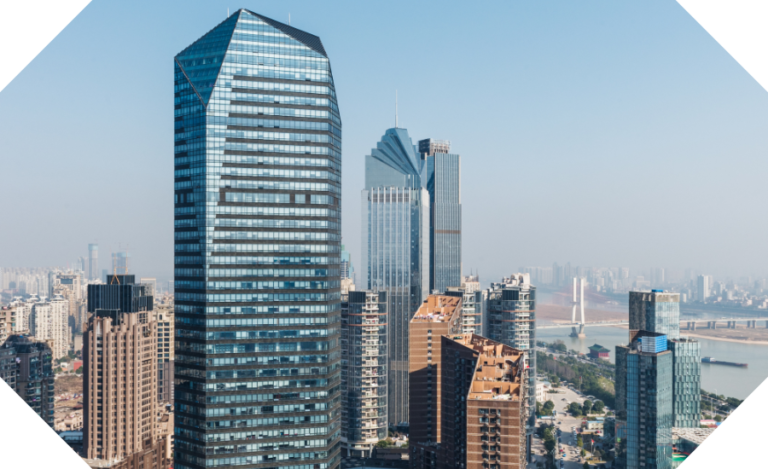BIM for Sustainable Construction: Driving Eco-Friendly Innovation
Introduction
The construction industry is one of the largest contributors to carbon emissions, energy consumption, and material waste worldwide. As the demand for sustainable and eco-friendly solutions grows, the industry is shifting towards greener practices to reduce its environmental footprint. One of the key technologies driving this change is Building Information Modeling (BIM).
BIM is transforming how buildings are designed, built, and managed, enabling construction professionals to create energy-efficient, low-waste, and environmentally responsible structures. By integrating sustainability principles into the digital design process, BIM helps reduce resource wastage, optimize energy performance, and promote green building practices.
In this blog, we will explore how BIM is shaping sustainable construction, its benefits, and its role in driving eco-friendly innovation in the industry.

What is Sustainable Construction?
Sustainable construction refers to the practice of designing, constructing, and operating buildings in an environmentally responsible manner. The goal is to minimize resource consumption, reduce environmental impact, and ensure long-term efficiency.
Key principles of sustainable construction include:
- Energy efficiency: Reducing energy consumption through smart design and renewable energy sources.
- Material sustainability: Using eco-friendly, recyclable, and locally sourced materials.
- Water conservation: Implementing efficient water management systems.
- Waste reduction: Minimizing construction waste through better planning and reuse strategies.
- Indoor environmental quality: Enhancing air quality and comfort within buildings.
BIM plays a critical role in integrating these principles into every stage of the building lifecycle.
How BIM Supports Sustainable Construction
1. Energy Efficiency and Performance Optimization
BIM allows architects and engineers to conduct energy simulations early in the design phase. By using energy modeling tools, professionals can:
- Analyze solar exposure, ventilation, and natural lighting to optimize building orientation.
- Simulate heating, cooling, and insulation performance to minimize energy loss.
- Integrate renewable energy sources, such as solar panels and wind turbines, into the design.
By making data-driven decisions, BIM helps improve energy efficiency, reducing the building’s carbon footprint and operational costs.
2. Smart Material Selection
Traditional construction methods often result in excessive material waste. BIM enables:
- Accurate quantity take-offs, ensuring precise material estimation and reducing excess use.
- Selection of sustainable materials by integrating green product databases into BIM models.
- Better coordination between teams, ensuring that eco-friendly materials are used efficiently.
Using recyclable and low-carbon materials ensures that buildings are constructed with minimal environmental impact.
3. Waste Reduction and Resource Optimization
Construction waste accounts for a significant portion of landfill waste worldwide. BIM helps in:
- Virtual construction planning, allowing teams to detect and resolve clashes before physical construction begins, reducing errors and material waste.
- Prefabrication and modular construction, enabling the production of components in controlled environments, leading to less on-site waste.
- Lifecycle analysis, predicting material durability and ensuring sustainable maintenance practices.
By reducing construction waste, BIM contributes to eco-friendly project execution.
4. Water Conservation Strategies
Water scarcity is a growing global concern, and BIM helps implement efficient water management solutions by:
- Designing rainwater harvesting systems and greywater recycling.
- Simulating water flow and consumption to reduce wastage.
- Integrating smart irrigation and low-flow fixtures into the building design.
By optimizing water usage, BIM ensures that buildings consume fewer resources and promote sustainable water management.
5. Sustainable Building Maintenance and Operations
Sustainability doesn’t stop at construction—it extends to a building’s entire lifecycle. BIM’s ability to store and manage building data helps facility managers:
- Monitor energy usage, ensuring continued efficiency.
- Predict maintenance needs, reducing unnecessary repairs and extending building lifespan.
- Implement smart building automation, integrating IoT solutions for optimized energy and water consumption.
Through digital twins and real-time monitoring, BIM ensures that buildings remain eco-friendly long after construction is completed.
6. Green Building Certifications and Compliance
BIM helps projects achieve sustainability certifications such as:
- LEED (Leadership in Energy and Environmental Design)
- BREEAM (Building Research Establishment Environmental Assessment Method)
- WELL Building Standard
By automating compliance checks, BIM ensures that projects meet sustainability standards without delays.
Case Studies: BIM in Sustainable Construction
1. The Edge, Amsterdam (World’s Greenest Building)
This LEED Platinum-certified office building uses BIM for:
- Energy-efficient design, reducing energy consumption by 70%.
- Smart sensors and IoT integration, optimizing lighting and heating.
- Sustainable material tracking, ensuring responsible construction.
2. One Central Park, Sydney
A high-rise sustainable development that utilizes BIM for:
- Green walls and vertical gardens to enhance air quality.
- Automated shading systems for natural light optimization.
- Rainwater recycling and irrigation systems for reduced water waste.
These projects highlight how BIM transforms sustainability goals into reality.
Future of BIM in Sustainable Construction
1. AI and Machine Learning for Green Design
AI-powered BIM will analyze past projects and suggest eco-friendly design optimizations, further improving sustainability.
2. Cloud-Based BIM Collaboration
Cloud BIM will enable real-time collaboration among global teams, ensuring sustainability principles are maintained across borders.
3. BIM and 3D Printing for Sustainable Building
BIM-driven 3D printing will create low-carbon, eco-friendly structures, reducing construction waste and energy usage.
4. Smart Cities and Digital Twins
BIM will contribute to smart city planning, integrating sustainable building data for eco-friendly urban development.
Conclusion
BIM is revolutionizing sustainable construction by enabling energy-efficient design, reducing waste, optimizing material use, and ensuring long-term building performance. It provides the tools needed to design, build, and operate green buildings that align with eco-friendly goals and industry regulations.
As BIM technology evolves, its role in sustainable construction will only grow, making it an essential tool for building a greener, smarter, and more efficient future. By embracing BIM-driven sustainability, the construction industry can significantly reduce its environmental footprint while enhancing efficiency and cost-effectiveness.

